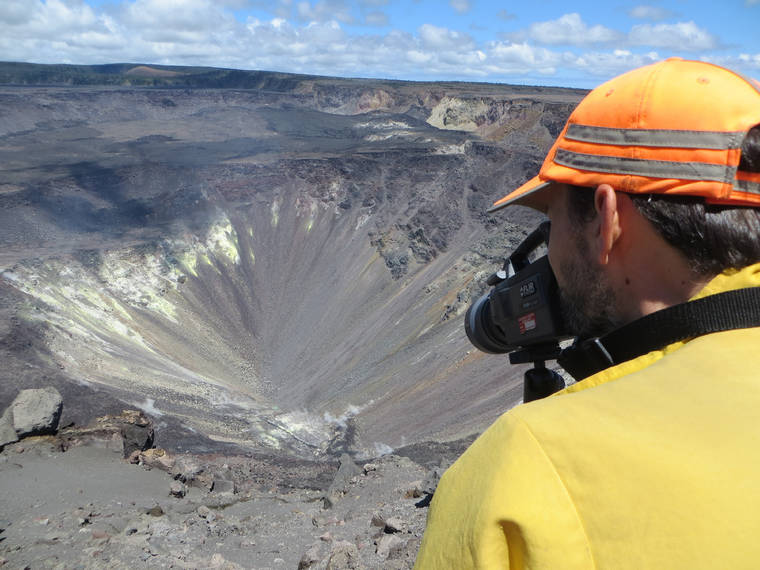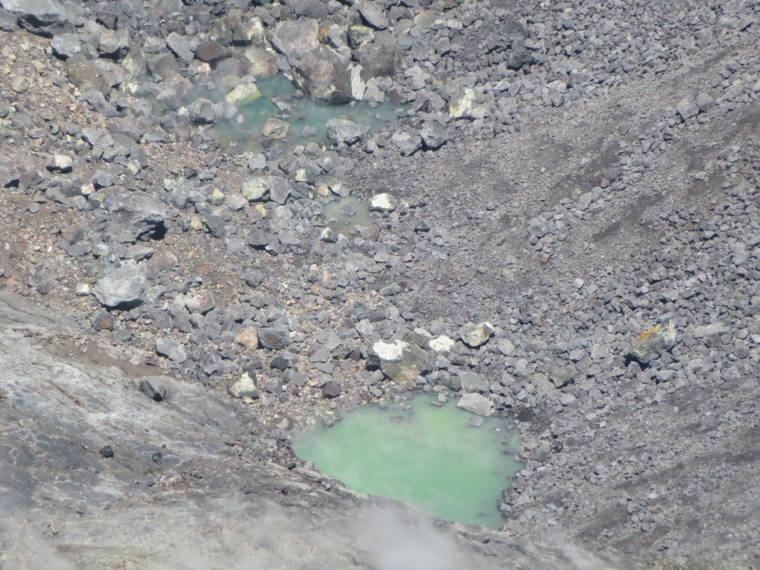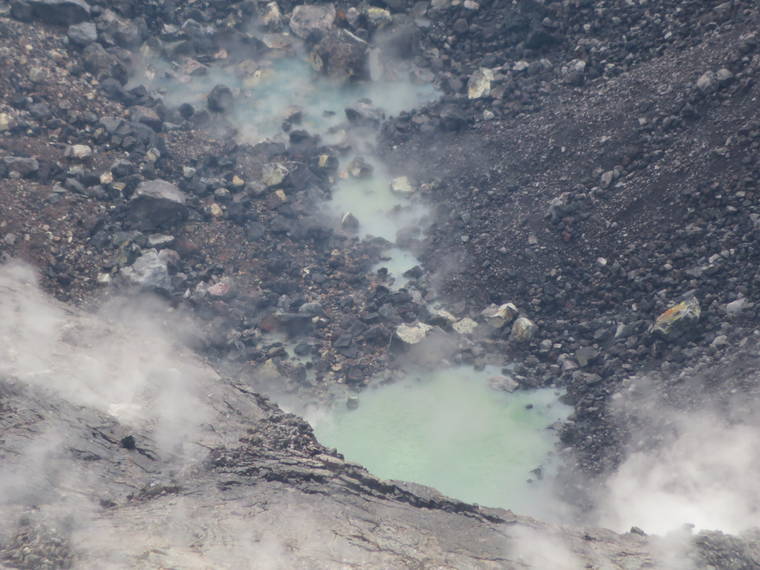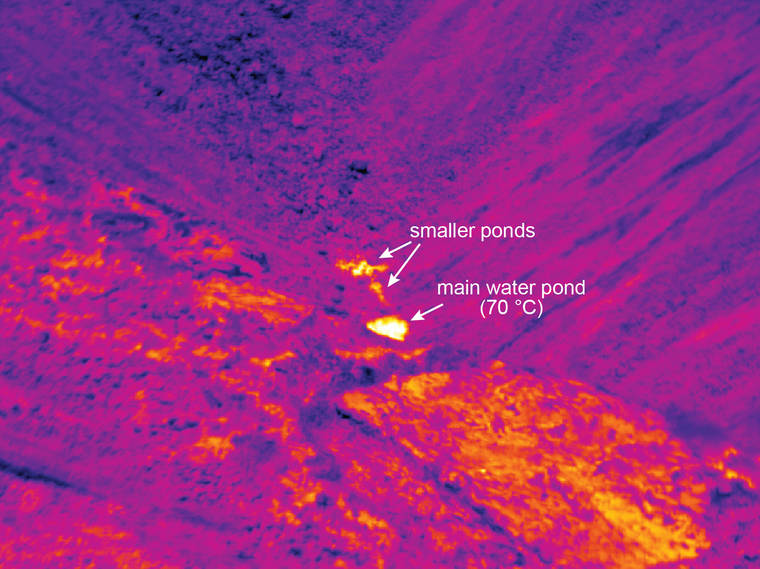Scientists say water in Halemaumau crater is heated by volcano




HONOLULU Scientists have discovered that a growing pond of water inside Halemaumau crater is being heated by Kilauea volcano.
HONOLULU — Scientists have discovered that a growing pond of water inside Halemaumau crater is being heated by Kilauea volcano.
The U.S. Geological Survey said Tuesday that temperature readings taken over the weekend show that a growing pool of water in Kilauea volcano’s Halemaumau crater, the former home of a popular lava lake, is about 158 degrees Fahrenheit.
For the first time in recorded history, the presence of water in the crater was confirmed last week. Since then, scientists have found two other small pools of water nearby.
The crater floor collapsed about 2,000 feet and the lava lake disappeared last summer as Kilauea stopped erupting for the first time in over 30 years.
USGS geologist Matt Patrick told The Associated Press on Tuesday that it’s hard to determine how deep the magma chamber is beneath the bottom of the crater floor where the water was found.
“I don’t think it’s possible to really determine too much about how deep the magma is below,” Patrick said. “There’s always a lot of gas coming through the surface, also a lot of sulfur output so that is kind of heating it and mixing in with the water.”
One of the first things researchers hope to do is gather samples of the water so they can determine its composition and possibly better understand what’s happening underground.
The bottom of the crater, which has long been the main conduit for Kilauea’s erupting lava, is now below the water table, officials said last week.
The area is inaccessible and dangerous because of pooling gases and other hazards, so researchers will likely use a helicopter to lower a bucket into the bottom of the crater to collect water samples, Patrick said.
USGS geologist Janet Babb said observations made Tuesday show the water level continues to rise and the three ponds are starting to merge into one. A small pond was first spotted on July 25 and the water has continued to rise since.
In certain circumstances, underground magma interacting with groundwater can create explosive eruptions.
USGS researchers say an eruption is not imminent and the public alert level for the volcano has not changed.
Historically, Kilauea has gone through long periods of explosive phases that have lasted hundreds of years. The volcano then goes through phases of slower, so-called effusive eruptive periods. Kilauea has been in an effusive state for about 200 years.
Geologists also took video of steam rising from the pond.
USGS set up a webcam to monitor the water inside Halemaumau crater and will continue to make observations and watch for changes.


